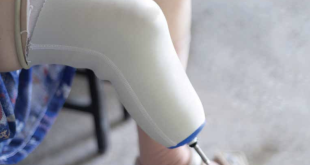 WHO defines physical activity as any bodily movement produced by skeletal muscles that requires energy expenditure. Physical activity refers to all movement, including during leisure time, for transport to get to and from places, or as part of a person’s work.
WHO defines physical activity as any bodily movement produced by skeletal muscles that requires energy expenditure. Physical activity refers to all movement, including during leisure time, for transport to get to and from places, or as part of a person’s work.
Worldwide facts:
• More than a quarter of the world’s adult population (1.4 billion) is insufficiently active.
• Worldwide, around one in three women and one in four men do not do enough physical activity to stay healthy.
• Levels of inactivity are twice as high in high-income countries as compared to low-income countries.
Nepal facts:
• 3.5% of the population is physically inactive.
• Nearly 53.5% don’t follow the advice to do physical activity.
• People living in urban areas are more physically inactive.
Why are physical activity guidelines important?
Physical activity is important for all age groups, and people having various health conditions like pregnancy, chronic health ailments, and disability. Being physically active can improve your brain health, help manage weight, reduce the risk of disease, strengthen bones and muscles, and improve your ability to do everyday activities. Both moderate- and vigorous-intensity physical activity improve health. Regular physical activity can help keep your thinking, learning, and judgment skills sharp as you age. It can also reduce your risk of depression and anxiety and help you sleep better. Popular ways to be active include walking, cycling, wheeling, sports, and active recreation and play, and can be done at any level of skill and for enjoyment by everybody.
How much of physical activity is recommended?
WHO guidelines and recommendations provide details for different age groups and specific population groups on how much physical activity is needed for good health.
For children under 5 years:
• Spend at least 180 minutes in a variety of physical activities at any intensity, of which at least 60 minutes is moderate- to vigorous-intensity physical activity, spread throughout the day; more is better.
Children and adolescents aged 5-17 years:
• Should do at least an average of 60 minutes per day of moderate-to-vigorous intensity, mostly aerobic physical activity, across the week.
• Should incorporate vigorous-intensity aerobic activities, as well as those that strengthen muscle and bone, at least three days a week.
Adults aged 18 years and above:
• Should do at least 150–300 minutes of moderate-intensity aerobic physical activity; or at least 75–150 minutes of vigorous-intensity aerobic physical activity; or an equivalent combination of moderate- and vigorous-intensity activity throughout the week.
• Should also do muscle-strengthening activities at moderate or greater intensity that involve all major muscle groups on two or more days a week, as these provide additional health benefits.
• May increase moderate-intensity aerobic physical activity to more than 300 minutes; or do more than 150 minutes of vigorous-intensity aerobic physical activity; or an equivalent combination of moderate- and vigorous-intensity activity throughout the week for additional health benefits.
• As part of their weekly physical activity, older adults should do varied multicomponent physical activity that emphasizes functional balance and strength training at moderate or greater intensity, on three or more days a week, to enhance functional capacity and to prevent falls.
Pregnant and postpartum women: All pregnant and postpartum women without contraindication should:
• Do at least 150 minutes of moderate-intensity aerobic physical activity throughout the week.
• Incorporate a variety of aerobic and muscle-strengthening activities.
People living with chronic conditions (hypertension, type 2 diabetes, HIV and cancer survivors):
• Should do at least 150–300 minutes of moderate-intensity aerobic physical activity; or at least 75–150 minutes of vigorous-intensity aerobic physical activity; or an equivalent combination of moderate- and vigorous-intensity activity throughout the week
• Should also do muscle-strengthening activities at moderate or greater intensity that involve all major muscle groups on two or more days a week, as these provide additional health benefits.
Children and adolescents living with disability:
• Should do at least an average of 60 minutes per day of moderate-to-vigorous intensity, mostly aerobic physical activity, across the week.
• Should incorporate vigorous-intensity aerobic activities, as well as those that strengthen muscle and bone, at least three days a week.
Adults living with disability, if possible:
• Should do at least 150–300 minutes of moderate-intensity aerobic physical activity; or at least 75–150 minutes of vigorous-intensity aerobic physical activity; or an equivalent combination of moderate- and vigorous-intensity activity throughout the week
• Should also do muscle-strengthening activities at moderate or greater intensity that involve all major muscle groups on two or more days a week, as these provide additional health benefits.
• As part of their weekly physical activity, older adults should do varied multicomponent physical activity that emphasizes functional balance and strength training at moderate or greater intensity, on three or more days a week, to enhance functional capacity and to prevent falls.
• May increase moderate-intensity aerobic physical activity to more than 300 minutes; or do more than 150 minutes of vigorous-intensity aerobic physical activity; or an equivalent combination of moderate- and vigorous-intensity activity throughout the week for additional health benefits.
See your doctor first: It is a good idea to see your doctor before starting your physical activity program if:
• You are aged over 45 years.
• Physical activity causes pain in your chest.
• You often faint or have spells of severe dizziness.
• Moderate physical activity makes you very breathless.
• You are at a higher risk of heart disease.
• You think you might have heart disease or you have heart problems.
• You are pregnant.
Pre-exercise screening is used to identify people with medical conditions that may put them at a higher risk of experiencing a health problem during physical activity. It is a filter or ‘safety net’ to help decide if the potential benefits of exercise outweigh the risks for you.
Benefits and risks of physical activity:
In children and adolescents, physical activity improves:
• Physical fitness (cardiorespiratory and muscular fitness).
• Cardiometabolic health (blood pressure, dyslipidemias, glucose, and insulin resistance).
• Bone health.
• Cognitive outcomes (academic performance, executive function).
• Mental health (reduced symptoms of depression).
• Reduced adiposity.
In adults and older adults, higher levels of physical activity improve:
• Risk of all-cause mortality.
• Risk of cardiovascular disease mortality.
• Incident hypertension.
• Incident site-specific cancers (bladder, breast, colon, endometrial, oesophageal adenocarcinoma, gastric and renal cancers).
• Incident type-2 diabetes.
• Prevents of falls.
• Mental health (reduced symptoms of anxiety and depression).
• Cognitive health.
• Sleep.
• Measures of adiposity may also improve.
For pregnant and post-partum women:
Physical activity confers the following maternal and fetal health benefits: a decreased risk of:
• Pre-eclampsia.
• Gestational hypertension.
• Gestational diabetes (for example 30% reduction in risk).
• Excessive gestational weight gain.
• Delivery complications.
• Postpartum depression.
• Newborn complications.
• Physical activity has no adverse effects on birth weight or increased risk of stillbirth.
How to increase physical activity?
Countries and communities must take action to provide everyone with more opportunities to be active in order to increase physical activity. This requires a collective effort, both national and local, across different sectors and disciplines to implement policy and solutions appropriate to a country’s cultural and social environment to promote, enable, and encourage physical activity.
Policies to increase physical activity aim to ensure that:
• Walking, cycling and other forms of active non-motorized forms of transport are accessible and safe for all.
• Labor and workplace policies encourage active commuting and opportunities for being physically active during the work day.
• Childcare, schools, and higher education institutions provide supportive and safe spaces and facilities for all students to spend their free time actively.
• Primary and secondary schools provide quality physical education that supports children to develop behavior patterns that will keep them physically active throughout their lives.
• Community-based and school-sport programs provide appropriate opportunities for all ages and abilities.
• Sports and recreation facilities provide opportunities for everyone to access and participate in a variety of different sports, dance, exercise and active recreation.
• Health care providers advise and support patients to be regularly active.
 Medicosnext
Medicosnext




